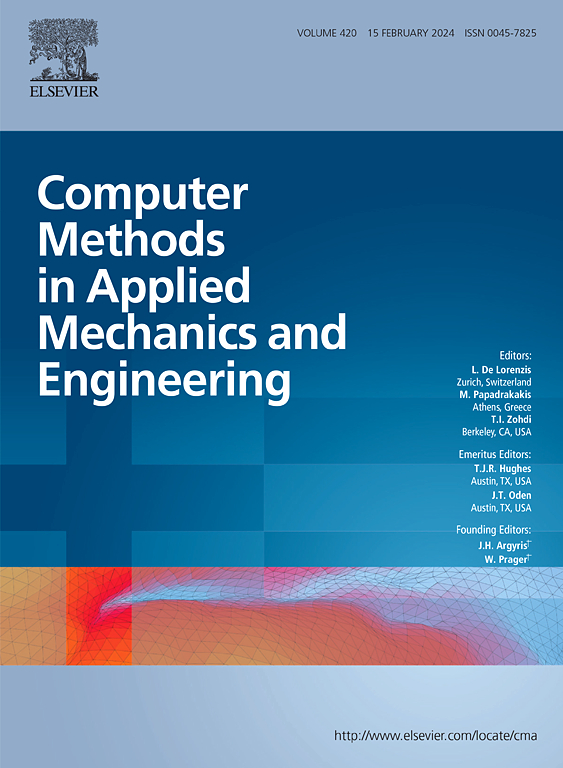DeepOKAN: Deep operator network based on Kolmogorov Arnold networks for mechanics problems
IF 6.9
1区 工程技术
Q1 ENGINEERING, MULTIDISCIPLINARY
Computer Methods in Applied Mechanics and Engineering
Pub Date : 2025-01-14
DOI:10.1016/j.cma.2024.117699
引用次数: 0
Abstract
The modern digital engineering design often requires costly repeated simulations for different scenarios. The prediction capability of neural networks (NNs) makes them suitable surrogates for providing design insights. However, only a few NNs can efficiently handle complex engineering scenario predictions. We introduce a new version of the neural operators called DeepOKAN, which utilizes Kolmogorov Arnold networks (KANs) rather than the conventional neural network architectures. Our DeepOKAN uses Gaussian radial basis functions (RBFs) rather than the B-splines. RBFs offer good approximation properties and are typically computationally fast. The KAN architecture, combined with RBFs, allows DeepOKANs to represent better intricate relationships between input parameters and output fields, resulting in more accurate predictions across various mechanics problems. Specifically, we evaluate DeepOKAN’s performance on several mechanics problems, including 1D sinusoidal waves, 2D orthotropic elasticity, and transient Poisson’s problem, consistently achieving lower training losses and more accurate predictions compared to traditional DeepONets. This approach should pave the way for further improving the performance of neural operators.
DeepOKAN:基于力学问题Kolmogorov Arnold网络的深度算子网络
现代数字工程设计往往需要对不同场景进行昂贵的重复模拟。神经网络(NNs)的预测能力使其成为提供设计见解的合适替代品。然而,只有少数神经网络可以有效地处理复杂的工程场景预测。我们引入了一种名为DeepOKAN的新版本的神经算子,它利用Kolmogorov Arnold网络(KANs)而不是传统的神经网络架构。我们的DeepOKAN使用高斯径向基函数(rbf)而不是b样条。rbf提供了良好的近似特性,并且通常计算速度很快。KAN架构与rbf相结合,使DeepOKANs能够表示输入参数和输出字段之间更复杂的关系,从而对各种力学问题进行更准确的预测。具体来说,我们评估了DeepOKAN在几个力学问题上的性能,包括1D正弦波、2D正交异性弹性和瞬态泊松问题,与传统deeponet相比,始终实现更低的训练损失和更准确的预测。这种方法将为进一步提高神经算子的性能铺平道路。
本文章由计算机程序翻译,如有差异,请以英文原文为准。
求助全文
约1分钟内获得全文
求助全文
来源期刊
CiteScore
12.70
自引率
15.30%
发文量
719
审稿时长
44 days
期刊介绍:
Computer Methods in Applied Mechanics and Engineering stands as a cornerstone in the realm of computational science and engineering. With a history spanning over five decades, the journal has been a key platform for disseminating papers on advanced mathematical modeling and numerical solutions. Interdisciplinary in nature, these contributions encompass mechanics, mathematics, computer science, and various scientific disciplines. The journal welcomes a broad range of computational methods addressing the simulation, analysis, and design of complex physical problems, making it a vital resource for researchers in the field.

 求助内容:
求助内容: 应助结果提醒方式:
应助结果提醒方式:


